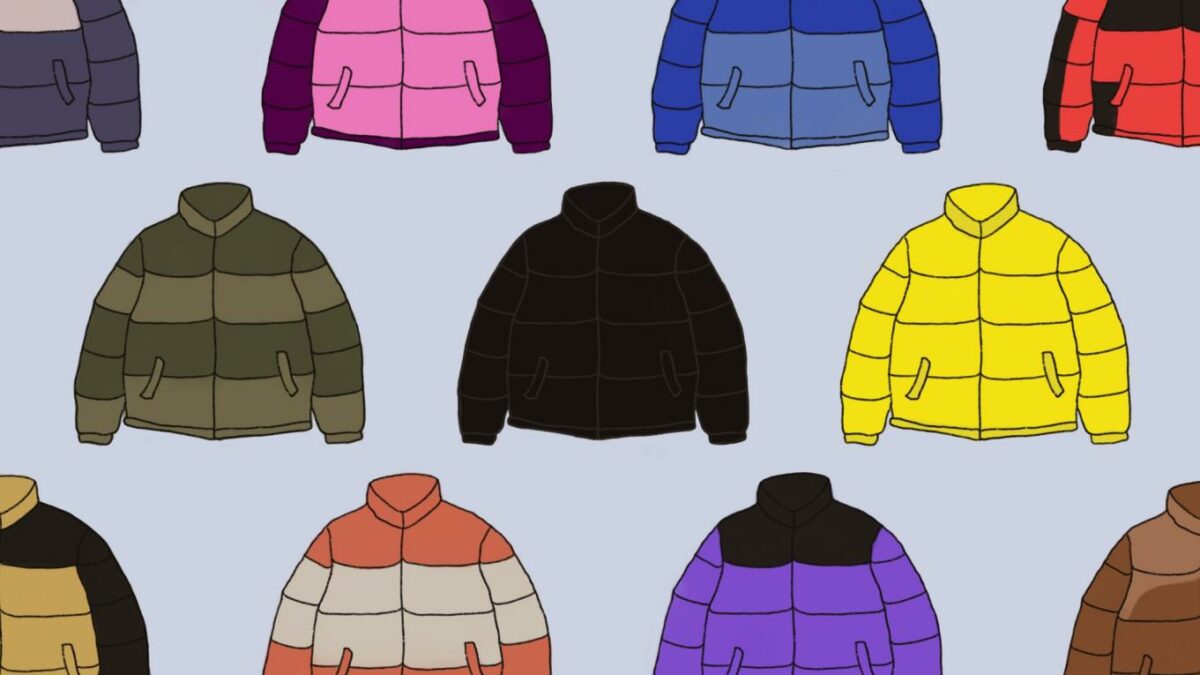While balaclavas made their big statement during the London winter, Australia hasn’t quite followed suit. In terms of the hottest winter accessories, we’ve made our bold statement with the infamous puffer jacket. With its equal share of lovers and haters, the return of the puffer is an early signal that winter has arrived. For some, it’s a closet staple, a ride-or-die for windy storms and chilly nights out. But for others, it’s further evidence of the capital’s monotony. On campus, the likeness of little Michelin men walking across Kambri lawns has prompted a short investigation into the puffer: overrated winter essential or dependable cold-proof layer?
Whether you’re Team Kathmandu or North Face, there is no denying puffer jackets’ chokehold on the Australian psyche. The puffer was originally an Australian invention that has been exported internationally. The humble origins of this insulating jacket are credited to George Finch. An intelligent chemist and avid mountaineer, Finch invented the first puffer jacket in 1922 during a climbing expedition up Mount Everest. Finch’s ‘eiderdown coat’ was durable, compact, lightweight, and successful at cutting back against high wind speeds. Today, these are the selling features of the puffer.
As seen on campus, the puffer is a smart choice for individuals who hate being caught in the cold. Compared to its capital neighbours, Melbourne and Sydney, Canberra’s winters can get exceptionally chilly and dry. Canberra is an in-land city and doesn’t have the coast to regulate its temperature. In scientific terms, water has a higher heat capacity than land, meaning its surface area requires more energy to heat and cool. As a result, coastal regions experience milder temperatures compared to inland climates. While the puffer is the obvious choice for those valuing practicality and comfort, wearers shouldn’t have to compromise on style. In fact, this winter, we see a lot more variety in terms of shape, cut and colour of the puffer jacket. From colourful metallic coated puffers to floor-length down-coats, outerwear doesn’t have to look monotonous. Changing up and manipulating the shape of the puffer is the surest way to stay on trend whilst maximising warmth.
Cropped puffers have been a fan favourite for those who want to balance the practicality of a quilted down jacket but without the overbearing volume of the puffer stitching. The shorter length of the jacket ensures that the wearer’s figure is not swallowed by shadows and padding but is instead given a flattering outline. For those erring away from this more youthful and boxier fit, a full-length winter puffer is a more sophisticated outerwear piece that doubles well both in and outside class. Often sported in more neutral palettes, this puffer-style parka is an equally flattering choice. Its streamlined silhouette gives an elongated yet sleek contour to the body.
In terms of colour, it’s not uncommon to see puffers in red Cheeto or butter yellow as you walk across campus. It seems that post-lockdown wardrobes are brimming with energy and flamboyance. Opting for a bolder colourway has been a popular choice for many students, particularly at the apex of winter. While Finch was originally mocked for the puffer’s shape and initial parakeet green shade, today, his puffer would be heralded as a novel and funky piece of outerwear. Given the jacket’s versatility, it’s clear that the rise of the puffer is no faux pas.
We acknowledge the Ngunnawal and Ngambri people, who are the Traditional Custodians of the land on which Woroni, Woroni Radio and Woroni TV are created, edited, published, printed and distributed. We pay our respects to Elders past and present. We acknowledge that the name Woroni was taken from the Wadi Wadi Nation without permission, and we are striving to do better for future reconciliation.
